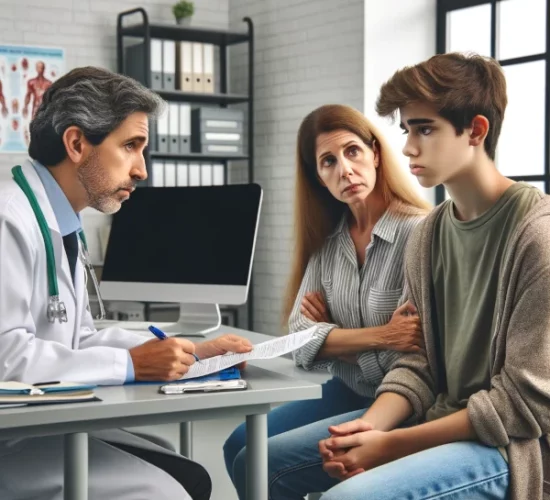Introduction
Chronic Lyme disease, mirroring the persistence of long COVID, often leaves patients feeling dismissed and desperate for recognition and effective treatment. Tracy Jakich Davis’ profound experience with her son Jaden’s undiagnosed symptoms in Phoenix, Arizona, sheds light on the struggles many face in their journey from misdiagnosis to finally identifying chronic Lyme disease.
The Diagnostic Odyssey
Between 2012 and 2014, Jaden Davis grappled with a plethora of symptoms that left doctors perplexed. Multiple misdiagnoses led to inappropriate and even harmful treatments, including an unnecessary brain surgery. The turning point in this challenging journey came when Tracy, through her own research, connected Jaden’s symptoms to a camping trip, suspecting Lyme disease – a diagnosis initially disregarded by medical professionals. “You think, ‘Okay, now we have the answer and we can get it treated,” Davis told Salon in a phone interview. “I went to his neurologist and said ‘I think I know what this is,’ and they wouldn’t take it seriously.”
The Burden of Chronic Lyme Disease
Chronic Lyme Disease, especially in its form as Post-treatment Lyme Disease Syndrome (PTLDS), often imposes significant financial and physical burdens on patients and their families. Tracy’s experience, having spent over $300,000 on Jaden’s treatment, exemplifies these challenges and the frequent difficulties in navigating insurance and competent medical care.
The Science and Controversy
The Centers for Disease Control and Prevention (CDC) describe the science surrounding chronic Lyme disease as “limited, emerging, and unsettled.” The increasing incidence of Lyme disease, exacerbated by climate change, emphasizes the urgency of addressing this condition. However, the complexity of chronic Lyme disease, often resembling other diseases and coupled with the inconsistency of diagnostic tests, adds to the challenge.
Treatment Challenges and the Healthcare System
Navigating the healthcare system often proves challenging for patients with PTLDS, as they face dismissive attitudes and a lack of consensus on effective treatment strategies. This disparity in treatment approaches and insurance inadequacies leaves many patients without the care they desperately need. “It’s like we’re in this black hole,” Davis said, capturing the profound sense of frustration and desperation many families face in seeking a diagnosis and treatment for chronic Lyme disease.
The Need for Better Understanding and Resources
There’s a pressing need for the medical community to adopt a unified approach in diagnosing and treating PTLDS, recognizing its existence, and understanding its causes. Initiatives by the CDC, AMA, and NIH to develop better diagnostic tools and treatment guidelines are steps toward addressing these needs.
Expanding Knowledge and Resources
For a comprehensive understanding of Chronic Lyme Disease, tune into the Tick Boot Camp Podcast. This platform features interviews with doctors, researchers, celebrities, and patient stories, offering a wealth of information and support for those affected by Lyme disease. Check out the podcast for valuable insights.
Conclusion
Jaden’s journey, from the maze of misdiagnosis to managing his PTLDS, is a powerful testament to the resilience of patients and their families. It also highlights the urgent need for the medical community to recognize and effectively treat chronic Lyme disease. With growing awareness, there is hope for improved diagnostic methods, treatments, and a more compassionate healthcare approach.
Call to Action
For individuals struggling with symptoms of Lyme disease, seeking medical advice and advocating for a thorough investigation is critical. Engage with resources like the Tick Boot Camp Podcast and join the conversation to promote better understanding and treatment options for chronic Lyme disease.
Keywords
Chronic Lyme Disease, Post-treatment Lyme Disease Syndrome, PTLDS, Lyme disease treatment, Lyme disease diagnosis, tick-borne illnesses, healthcare challenges, patient advocacy, long COVID.






